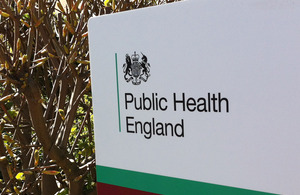Bradford’s Healthy Hearts: better management of CVD patients
A programme involving multiple interventions to improve the cardiovascular health of Bradford’s residents and reduce CVD-related deaths.

Summary
The Bradford’s Healthy Hearts programme is dealing with the higher-than-average rate of cardiovascular disease (CVD) prevalence and deaths in Bradford. This involves multiple interventions to:
- optimise statin therapy
- address atrial fibrillation
- establish prevalence of hypertension
- improve the care of patients known to have hypertension
Background
Bradford Districts CCG includes 41 GP practices caring for a population of approximately 350,000 people. The area has a higher-than-average rate of CVD and consequently, a high rate of CVD death. Findings show:
- 14% of people have hypertension
- 21,000 people have total cholesterol (TC) of over 4.00 mmol/l
- approximately 28% of all deaths are due to CVD
The Bradford’s Healthy Hearts programme aims to reduce CVD-related deaths by at least 10% and prevent 150 strokes and 350 myocardial infarctions by 2020.
What was involved?
Statins
One of the main features of the programme is optimal use of interventions to focus strongly on large-scale improvements, while minimising the workload and resource impact on front-line staff.
As part of this, 1 of the 3 features focused on optimising statin therapy, based on the recognition that the scale of the problem was far beyond the capacity of primary care to challenge using traditional systems and methods. The local statin treatment protocol was streamlined to:
- atorvastatin 40mg daily for all primary prevention patients
- atorvastatin 80mg daily for all secondary prevention patients
IT searches identified patients who could be swapped from generic simvastatin to atorvastatin, and over 3 months, 6,000 patients switched their treatment. The use of atorvastatin is in line with NICE guidelines, however the dosage for primary prevention patients with no routine planned up-titration was a local decision to minimise the impact on primary care workload.
Hypertension
Another intervention for the first 2 years of the programme was to improve the care of patients already known to have hypertension. The aim was to increase the number of patients, aged under 80 years, achieving a blood pressure (BP) target of <140/90 mmHg.
The programme also included a multifaceted approach for atrial fibrillation (AF).
What works well?
In the first 2 and a half years following the launch of the programme in February 2015, there were treatment changes for nearly 22,000 patients and residents of the Bradford Districts CCG are now more aware of what is needed for a healthy heart.
Statins
The statin switch was well received by patients and practices. For the 6,000 patients who swapped from simvastatin to atorvastatin, there were significant indicative reductions in mean LDL-C of 0.9 mmol/l and in TC of 0.5 mmol/l.
As a result of this success, the programme moved on to patients at increased risk of CVD with a QRISK2 score greater than 10% and not on a statin. Over 5 months, 7,000 patients took up the offer of statins and in a sample of 2,136 of these patients there was a mean reduction in TC of 0.39 mmol/l.
Hypertension
The feedback from clinicians was that ease of implementation was crucial. Taking cues from the very successful, evidence-based Canadian hypertension programme and Million Hearts, a simplified treatment protocol was agreed upon after extensive consultation with local consultants across a wide range of specialties.
At baseline, 63% of patients with uncomplicated hypertension achieved a BP of less than 140/90 mmHg. Over a planned 2-year programme, a benchmark target of 76% was set, which was nearly achieved at just over 1 year.
At 16 months, 5,200 patients were newly identified to target, equating to 76%, despite increases in hypertension prevalence occurring at the same time.
Next steps
The Healthy Hearts programme is now embarking on a hypertension screening programme supported by the British Heart Foundation. It aims to screen 10,000 people, especially targeting those who are less likely to access healthcare.
Further information
Dr Youssef Beaini, GP and CVD Lead for Yorkshire and Humber Clinical Network